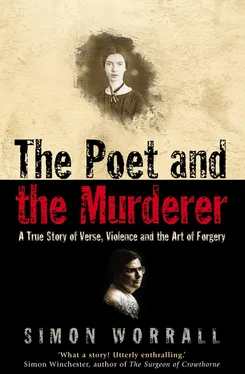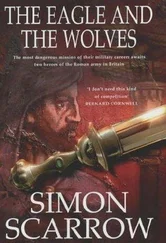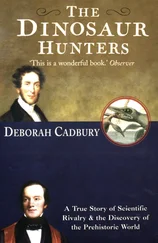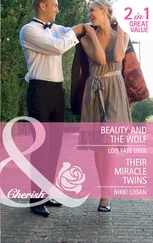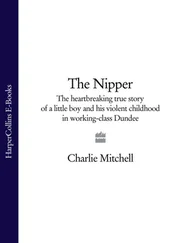In the first twenty-two months of operation Axelrod’s company turned over $1.4 million and Axelrod began to open other stores in Los Angeles, Dallas, Washington, D.C., and Costa Mesa, California. All were situated in the same kind of upscale shopping malls. All featured costly metallic fronting, lavish display cases, track lighting, and state-of-the-art climate control systems. Axelrod’s target customer was a new, eighties breed of collector who did not want to keep their purchases tucked away in vaults or safety deposit boxes, as old-style collectors had. They wanted to see their money hanging on the wall. It was all about ‘impact.’ A John F. Kennedy letter, matted in gray suede and framed in silver, could lend an air of probity to the boardroom of a futures trader on Wall Street. A collection of John Paul Jones memorabilia, encased in a gold frame, could make the new rich entrepreneur who owned everything feel that he even ‘owned’ a piece of history. Competitors referred to Axel-rod’s company as Autographs R Us.
Had Mark Hofmann forged the poem then sold it to Todd Axelrod in Las Vegas, as Ashworth had suggested? Had Axelrod then passed it onto Sotheby’s? If that were the case, thought Lombardo, why had Sotheby’s made no mention of this when he had called them to ask about the poem’s provenance? Why had Marsha Malinowski said that it came from a dealer in the Midwest? The more he worried over the details, the more unsettled Lombardo felt. It was not just that he might have bought a forgery. Hofmann was a convicted double-murderer who had savagely killed two innocent people. The poem would be tainted with blood. If he had, indeed, bought a Mark Hofmann forgery, it would be not just a disaster for the library. Lombardo might as well empty out his office drawer.
But perhaps Ashworth was mistaken. He could not exactly recall the words of the poem he had seen in 1985. Perhaps Hofmann had forged an Emily Dickinson poem, but not this one. Surely, he reasoned, no forger could ever acquire this level of knowledge about Emily Dickinson. It was not just the paper and the handwriting. It was those two words, ‘Aunt Emily.’ No forger would know this most private and secretive of poets well enough to know that though she kept almost everyone else in her life at arm’s length, she had always felt at ease with children. It would have taken Hofmann months, if not years, of research to get to this level of intimacy with her. But Lombardo had to be sure if the poem was genuine. And if anyone could tell him whether it was or not, it was Ralph Franklin, at Yale University’s legendary Beinecke Library.
CHAPTER TWO A Riddle in a Locked Box
From the outside the Beinecke Library looks like a stage set for a George Lucas movie. Designed by one of the most celebrated architects of the twentieth century, Gordon Bunshaft, who also created the Lever House and several other of New York’s most famous skyscrapers, the Beinecke is a black glass cube lined with one-and-a-half-inch-thick translucent panes of Vermont marble that change color as the sun moves around the building. Extending vertically through its center, like a spinal column, is a six-story-high glass shaft housing one of the world’s most valuable collections of rare books and manuscripts. Among its treasures are a copy of the Gutenberg Bible and one of the jewels of medieval illuminated mansucripts, the Savoy Hours. Its literary works include such gems of Anglo-Saxon culture as the original manuscripts of W. B. Yeats’s poem ‘Among Schoolchildren,’ Thomas Hardy’s Far From the Madding Crowd , and James Boswell’s Life of Johnson . It has rare sixteenth- and seventeenth-century printed works from Germany, France, and Italy; the world’s largest collection of playing cards; and a priceless bequest of Tibetan Buddhist manuscripts, including the Lhasa edition of the Kanjur in one hundred volumes that was personally donated by His Holiness the Fourteenth Dalai Lama in 1950.
The person responsible for the safety and well-being of these cultural treasures is a dapper, intensely focused man with a compact, muscular body, cropped gray hair, gray-blue eyes the color of the Atlantic in winter, and skin as white as the parchment he spends his life handling. For the last twenty years Ralph Franklin has also tirelessly edited one of the twentieth century’s great works of literary scholarship and detective work: the definitive, three-volume edition of Emily Dickinson’s poems.
Though Franklin had not said so the first time Dan Lombardo had called him, he had seen the poem three years earlier, in 1994, when it was faxed to him by Tammy Kahrs, chief archivist at the Gallery of History in Las Vegas.
Like Lombardo, Franklin was not particularly impressed by the quality of the poem. It read, he thought, like a Hallmark card. That could be explained by the fact that Dickinson appeared to be writing for a juvenile reader. Masterpiece or not, the idea that a new Dickinson poem, the first in forty years, had surfaced set Franklin’s blood racing. If it were to be authentic, it would be an exciting addition to the new edition of the poet’s works that Franklin was preparing.
On the phone that day Tammy Kahrs had sounded more like a country singer than a bibliophile to Franklin, but she seemed to know what she was talking about. One thing that particularly impressed Franklin was that, according to Kahrs, the previous owners of the manuscript had dated it to 1871. As Franklin knew better than anyone, dating manuscripts by Dickinson was extremely complicated. That the previous owners had ascribed such a precise date suggested to Franklin that the poem had originally come from a descendant of the Dickinson family. In the back of Franklin’s mind stirred the hope they might have other new poems.
The fact that the poem originated in Las Vegas, a city better known for slot machines than sonnets, did not overly trouble him. Manuscripts, he knew, can turn up anywhere, and the Gallery of History seemed to know quite a bit about this poem. According to Kahrs the paper was lined, and the embossing had the word Congress over a picture of the Capitol. Franklin knew that Dickinson had used numerous different letter papers at different times in her life. They came from mills all over New England, like Bridgeman and Childs in Northampton, Massachusetts. Some were embossed with a queen’s head or a flower set in an oval. Some bore the imprint of an eagle’s head. In 1871 she was frequently using Congress paper. Such precise knowledge, Franklin knew, is not easy to come by, particularly when the writer in question was someone as private as Emily Dickinson.
Most writers leave behind them a paper trail of letters, diaries, and publications from which a chronology of their work can be reconstructed. We know, for instance, when William Wordsworth wrote The Prelude . We know where the poet was living, what events in his life precipitated the poem, where it was first published, how much he received for it, what others said about it at the time, and where it fits into the arc of his life and work.
None of this applies to Emily Dickinson. ‘I found (the week after her death),’ wrote her sister, Lavinia Dickinson, in May 1886, ‘a box (locked) containing seven hundred wonderful poems, carefully copied.’ None of these seven hundred poems, or the other one thousand and eighty-nine that would later be located, was dated. Only twenty-four had titles. Only ten had been published in her lifetime, and those against her will. Publication, Dickinson once famously wrote, was ‘the Auction / Of the Mind of Man.’ She preferred what she called her ‘Barefoot Rank.’
Imagine if Picasso had never exhibited during his lifetime but that, after his death, his paintings were simply found piled in his studio, without dates or titles or any other clues as to when they were painted, who for, where, or why. The riddle Emily Dickinson left behind was made even more complex because of the confused and haphazard way in which her poems were eventually published. The first person to bring out an edition was the wife of an astronomy professor at Amherst College named Mabel Loomis Todd. A pretty, vivacious woman with limpid brown eyes, she had been the secret mistress of Dickinson’s brother, Austin Dickinson. Working with one of Dickinson’s closest friends, the editor Thomas Wentworth Higginson, she produced three popular selections of Dickinson’s poetry between 1890 and 1896.
Читать дальше
